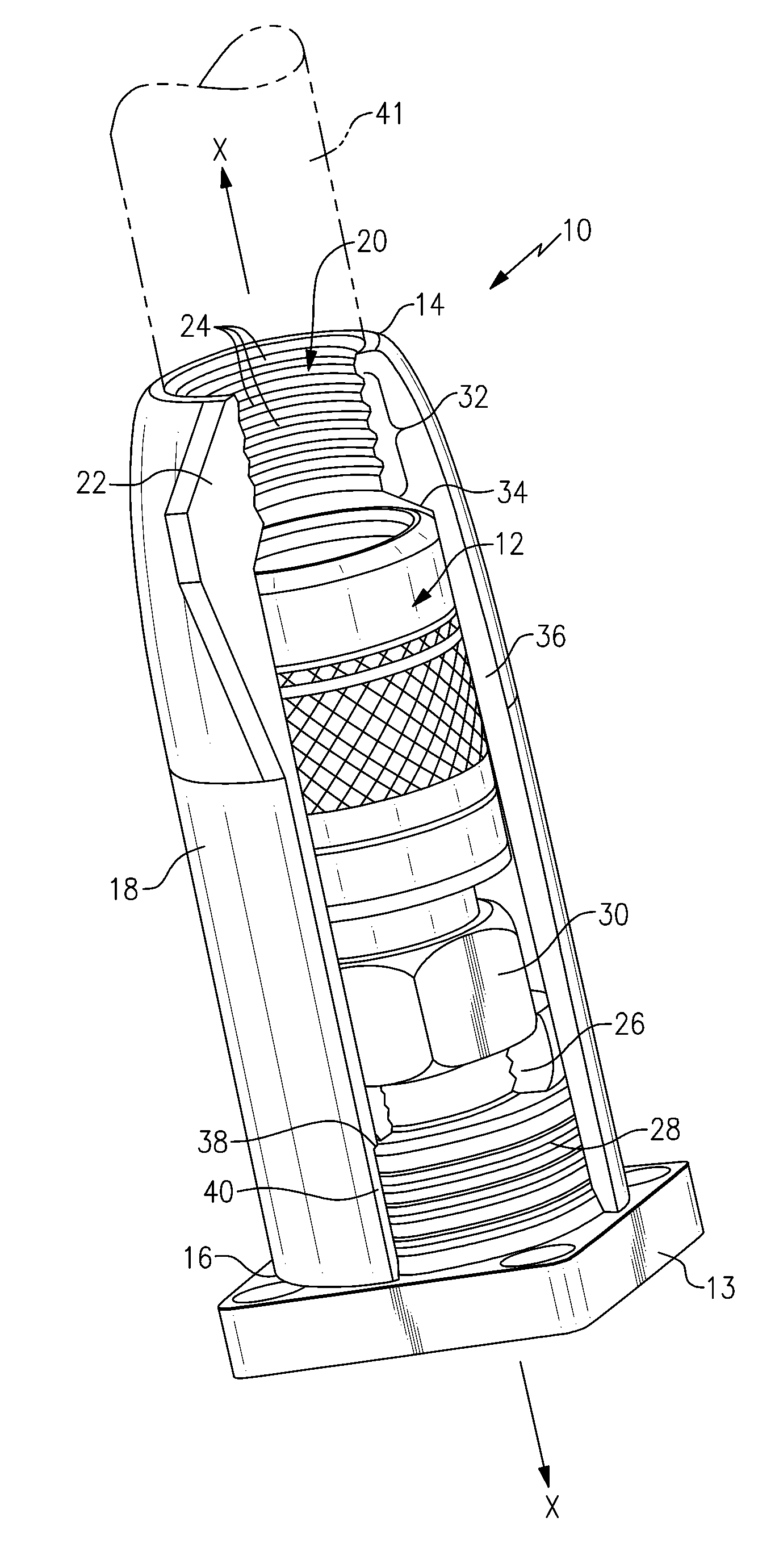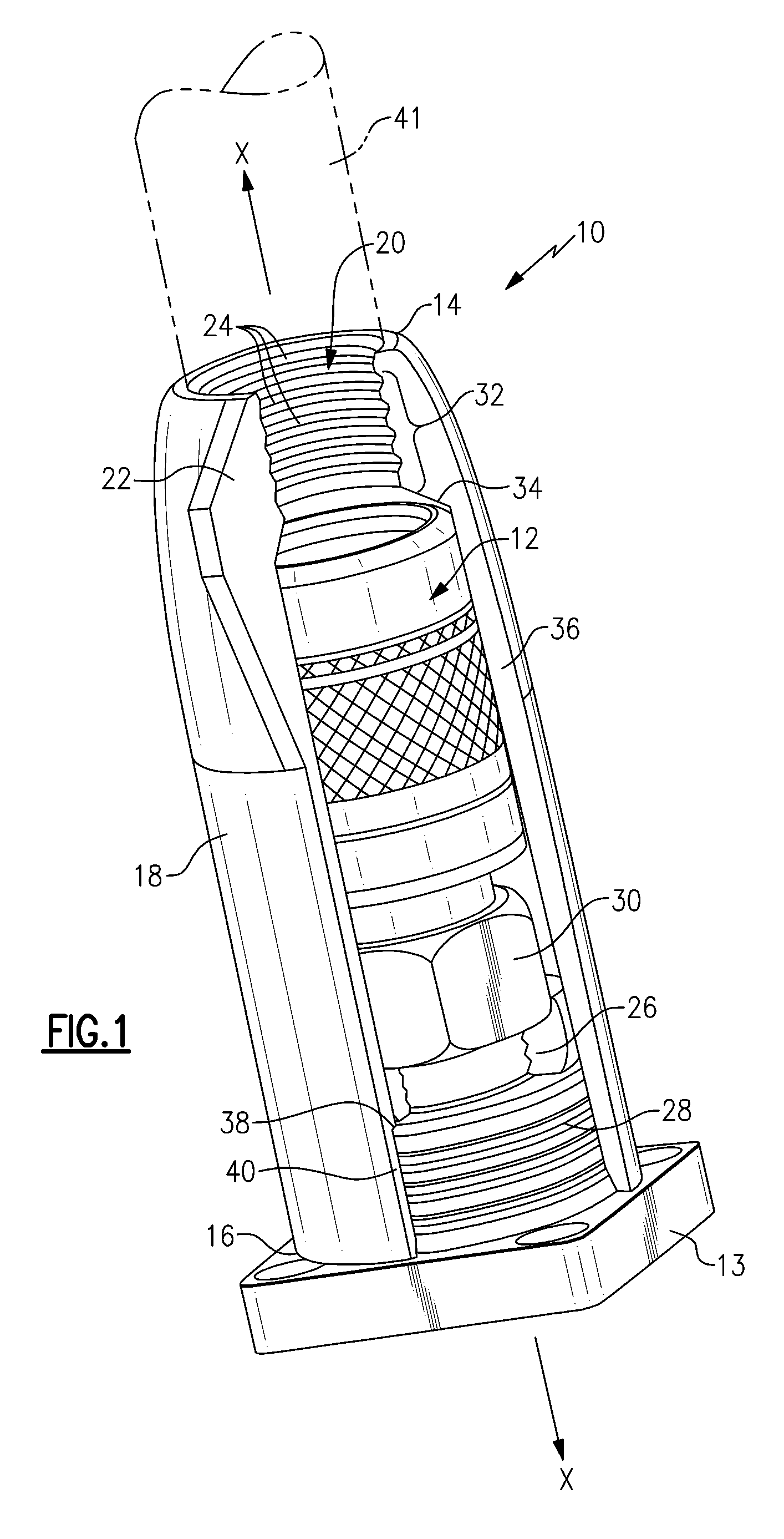Cover for cable connectors
a cable connector and cover technology, applied in the direction of coupling devices, coupling devices, coupling bases/cases, etc., can solve the problems of affecting the service life of components,
- Summary
- Abstract
- Description
- Claims
- Application Information
AI Technical Summary
Benefits of technology
Problems solved by technology
Method used
Image
Examples
Embodiment Construction
[0028]Referring now to the drawing figures in which like reference numerals refer to like parts throughout, there is seen in FIG. 1 a cover, designated generally by reference numeral 10, adapted to be placed in secure and sealing relation over a connector 12, such as (a 5-series connector manufactured by John Mezzalingua Associates, Inc. of East Syracuse, N.Y. that is adapted to terminate a ⅞″ cable). Connector 12 terminates on a bulkhead 13. In the embodiment of FIG. 1, cover 10 comprises an elongated body composed of a rubber material that exhibits a low modulus of elasticity over an extended temperature range, preferably a silicone rubber, that extends along a longitudinal axis X-X, a cable end 14, bulkhead end 16, exterior surface 18, interior surface 20, and wedge shaped wings 22 extending from opposing sides of exterior surface 18 that provide a gripping surface for a tool or manual engagement, such as pliers or a user's fingers, used to remove cover from covering relation to ...
PUM
 Login to View More
Login to View More Abstract
Description
Claims
Application Information
 Login to View More
Login to View More - R&D
- Intellectual Property
- Life Sciences
- Materials
- Tech Scout
- Unparalleled Data Quality
- Higher Quality Content
- 60% Fewer Hallucinations
Browse by: Latest US Patents, China's latest patents, Technical Efficacy Thesaurus, Application Domain, Technology Topic, Popular Technical Reports.
© 2025 PatSnap. All rights reserved.Legal|Privacy policy|Modern Slavery Act Transparency Statement|Sitemap|About US| Contact US: help@patsnap.com



